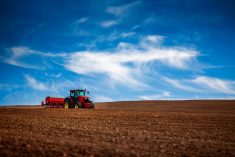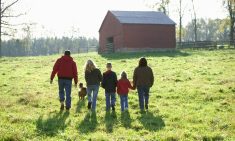Our farms are challenged. The old models are falling apart. Farms aren’t just becoming larger and more specialized, they’re also becoming more diverse. Success means different things to different farmers — and to different buyers and consumers — and it’s difficult to see the path that your particular farm should take through that minefield.
Our communities are challenged too. Often, they’re damaged by depopulation, but they can be threatened just as seriously by growth. Everywhere, it seems, restructuring is underway, and it takes real vision to see what kind of community we should be trying to build out of the rubble.
Read Also

Farmland values: assumptions and realities
Where farmland values are headed and what decisions farmers should make
And yes, our farm organizations are challenged too. Starved of new blood, they fall into patterns of thinking that seemed vibrant a couple generations ago, but that simply lock us into old ways of doing things today.
In this mix, there is no shortage of leaders and non-leaders.
It doesn’t have to be difficult to tell them apart. It sounds glib to say that non-leaders talk three times as much as leaders, but it is nevertheless true. Even more important, though, is that leaders make us feel uncomfortable. They make us stretch our thinking, they make us realize that real change is up to us and they make us grapple with the fact that the world does change.
You can also tell non-leaders, and their followers, because they say things that add up to “Real farmers look like me.”
Non-leaders feel they know who is a real farmer. Real farmers have farmed in the area for at least a couple generations, they grow the same crops and they do it more or less the same way. But while agriculture looks at its navel, small numbers of new, unconventional farmers are creating myriad new ways to farm, making this one of the most exciting eras in farm history. It’s easy to scoff at people doing things differently. It’s even easier to predict their demise. Leaders, though, invite them into the fold.
Non-leaders also say, “Consumers need to like what I produce.”
Nothing can touch agriculture for its efficiency and healthfulness. But our food system is neither perfect nor fair. Good crops and good meat get made into bad foods. In many ways, you can’t blame consumers for their dissatisfaction. Nonleaders say consumers have to get past it. Leaders see better markets.
At times, it seems non-leaders have the upper hand in agriculture. But that’s an illusion. Real progress is underway, and it’s always good to remember that no other industry is as good a training ground for leadership as agriculture.
The demands on farm leaders — at home, in the community, and on their organizations — are stronger than they’ve ever been. As you’ll see in this issue, and in future issues of Country Guide, the farm leaders are stronger too.
Are we getting it right? Let me know. I’m at [email protected], or you can call me at 519-674-1449.















